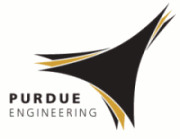Abstract
Problem scoping—determining the nature and boundaries of a problem—is an essential aspect of the engineering design process. Some studies from engineering education suggest that beginning students tend to skip problem scoping or oversimplify a problem. However, the ways these studies often characterize students’ problem scoping often do not reflect the complexity found in experts’ designing and rely on the number of criteria a student mentions or the time spent problem scoping. In this paper, we argue for methodological approaches that take into account not just what students name as criteria, but also how they weigh, balance, and choose between criteria and reflect on these decisions during complex tasks. Furthermore, we discuss that these problem-scoping actions should not be considered in isolation, but also how they are connected to the pursuit of a design solution. Using data from an elementary school classroom, we show how these ways of characterizing problem-scoping can capture rich beginnings of students’ engineering.
Recommended Citation
Watkins, J.,
Spencer, K.,
&
Hammer, D.
(2014).
Examining Young Students’ Problem Scoping in Engineering Design.
Journal of Pre-College Engineering Education Research (J-PEER), 4(1), Article 5.
https://doi.org/10.7771/2157-9288.1082


